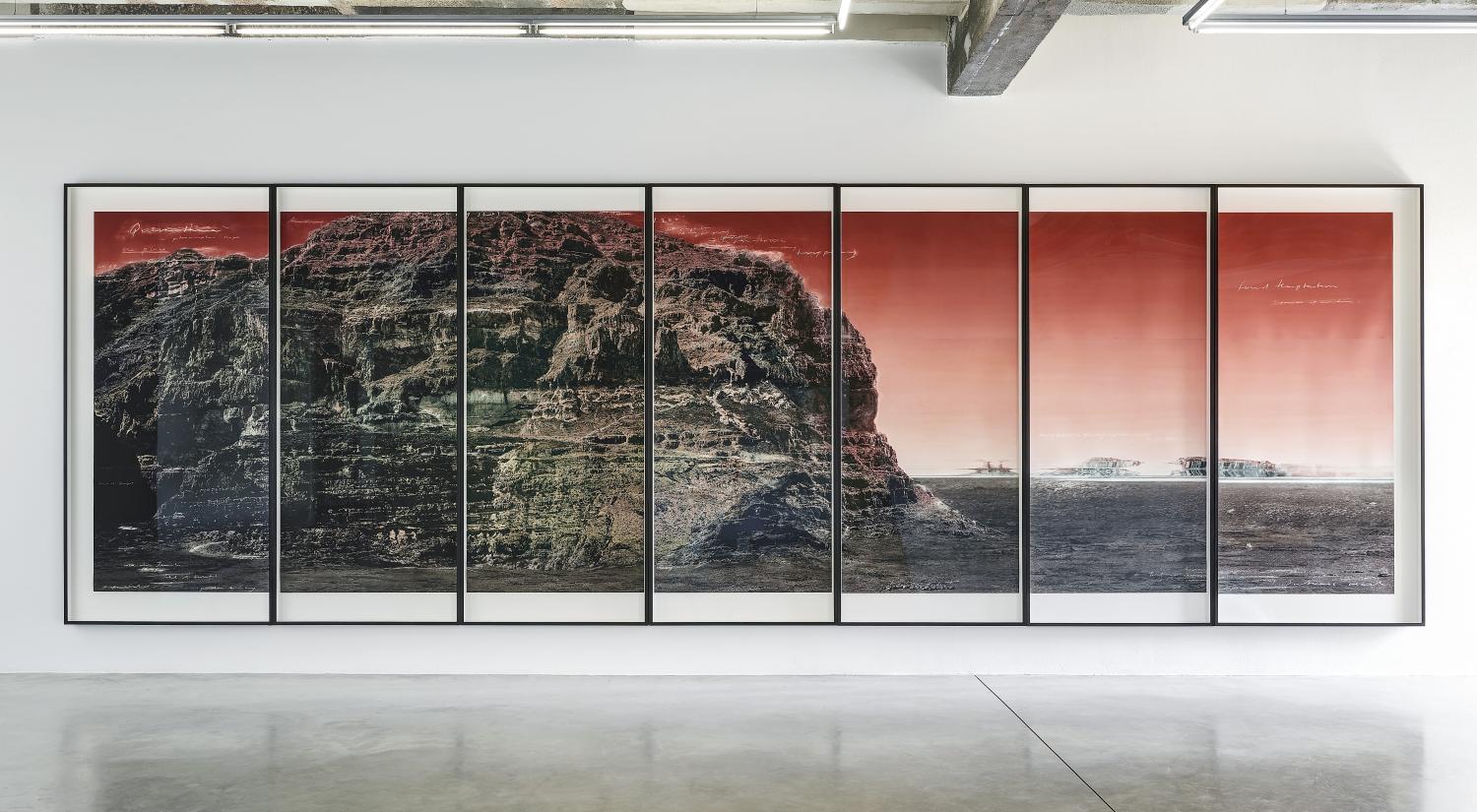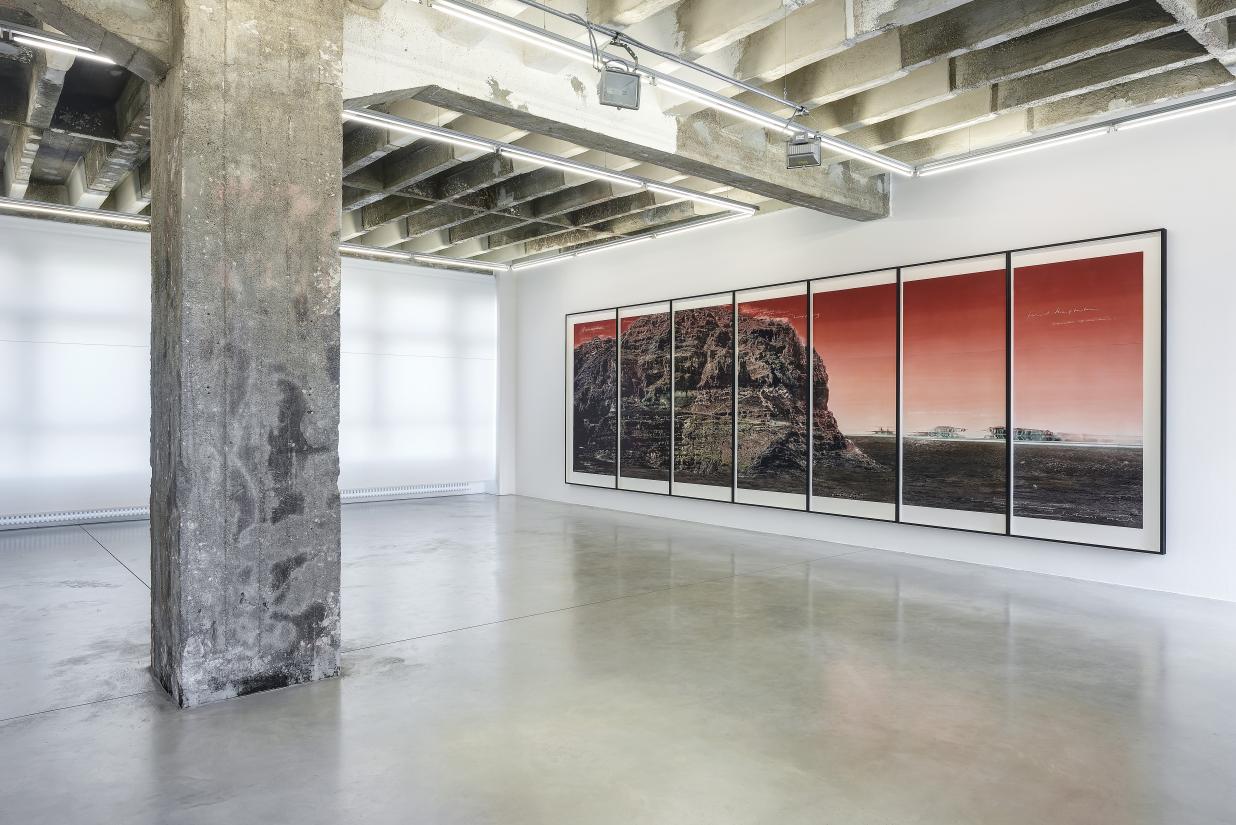Quarantania is said to be the mountain where Christ was tempted by the devil. In Christian tradition it is described as the Mount of Temptation, the site of Christ’s 40-day fast in the wilderness in the Holy Land. The mountain is topic of Tacita Dean’s monumental photogravure, which features several aspects of the British artist’s practice.
The work is divided into seven frames and appears as a filmic pan sequence. Quarantania is based on found photographic sources dating to the the late 19th century briefly before a Greek-Orthodox monastery was built on the rock. The combination of the old photos with more recent photos and a dynamic colour range creates a hallucinatory effect evoking the state Christ is believed to have experienced during his trials on the mountain.
The photographic image
The work shows an extension in both time and space, a manual treatment of the photographic images and a thematic field ranging from cultural history and religious to the medium of ‘the photographic image’.
Tacita Dean is best known for her extensive film production, but her work also encompasses drawing, graphic art, audio, video and photography. Photogravure creates the link between the actual and the fictive. The spectator mentally continues the ‘film’ that Dean’s works evoke, incorporating the works as part of their own story. Superimposed on the image are fragments of hand-written text that contributes to the narrative of the work although it defies decoding. Thus, the spectator does not get the full story, only fragments of a hidden narrative.
Photogravure as a medium
Dean is one of the most significant contemporary graphic artists, and since 2000 she has had a close collaboration with Niels Borch Jensen’s copperplate print studio on the island of Amager in Copenhagen.
Dean’s preferred graphic medium is photogravure. She often bases her photogravures on film, selecting individual stills and combining them in new ways. Photogravure is one of the oldest methods for transferring photographic images to paper. Today, the technique has reached a stage where it is possible to combine old and new materials and print technologies. The method results in an aesthetic expression that is essential for the photogravure and lends the work a particular textural quality.
About Tacita Dean
Tacita Dean (b. 1965) was born in England but now lives and works in Berlin and in Los Angeles. She graduated from the Slade School of Fine Arts in London and has held numerous solo exhibitions around the world, including at SMK – the Danish national art gallery, Tate Modern in London, Guggenheim in New York and Museo Tamayo in Mexico.




